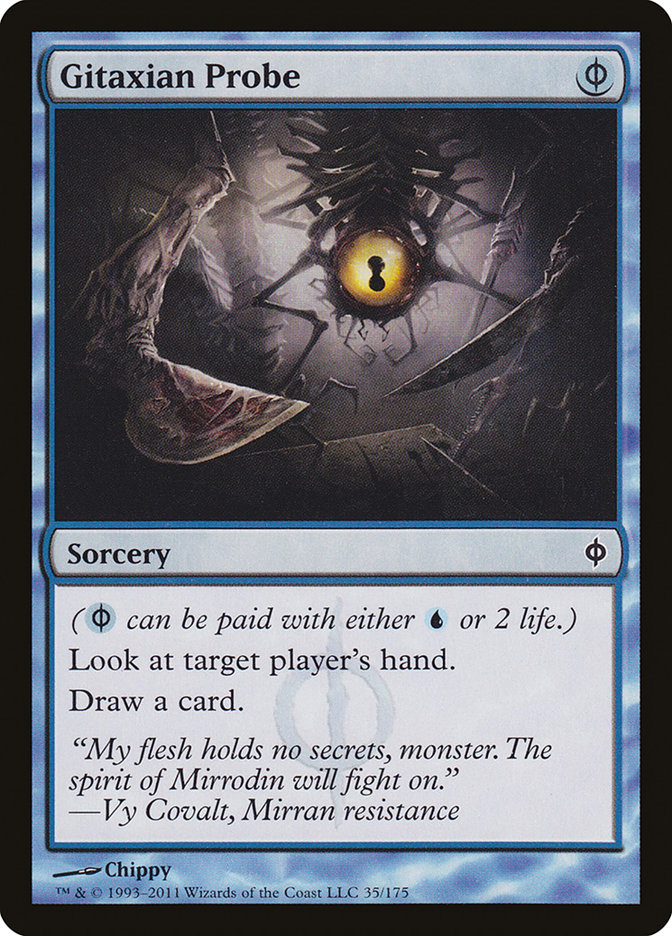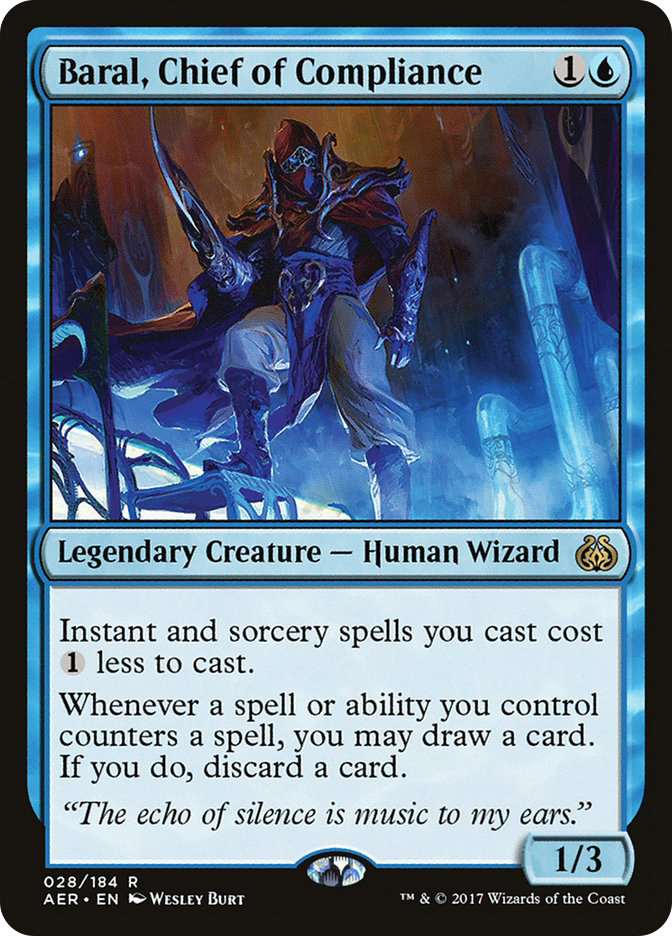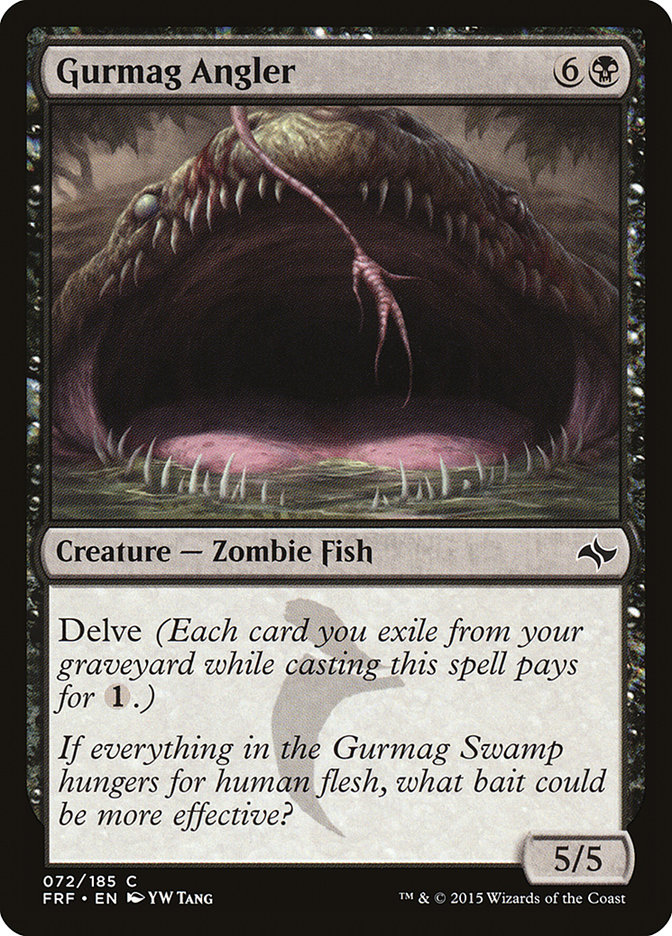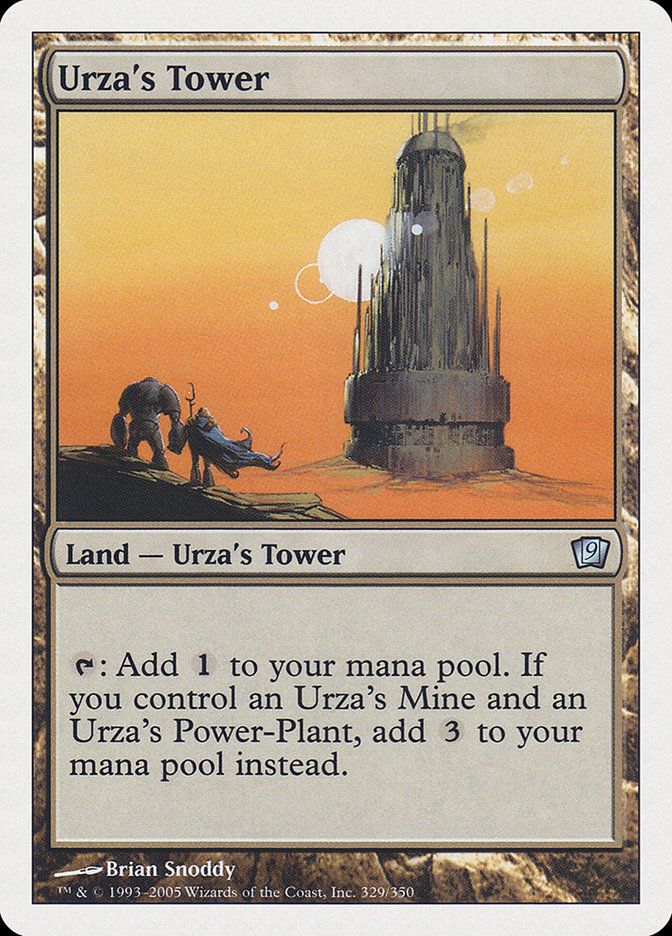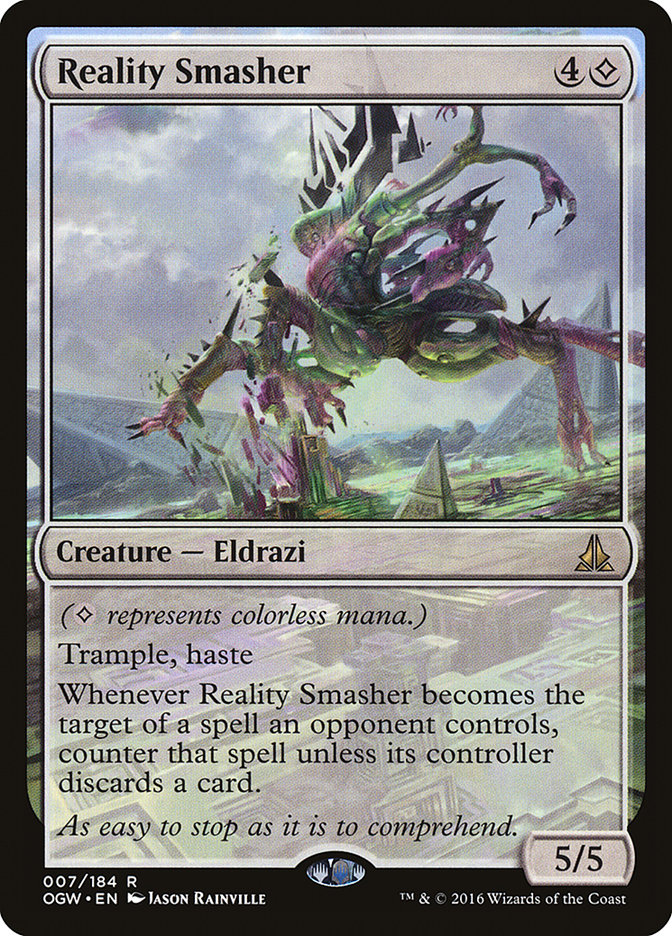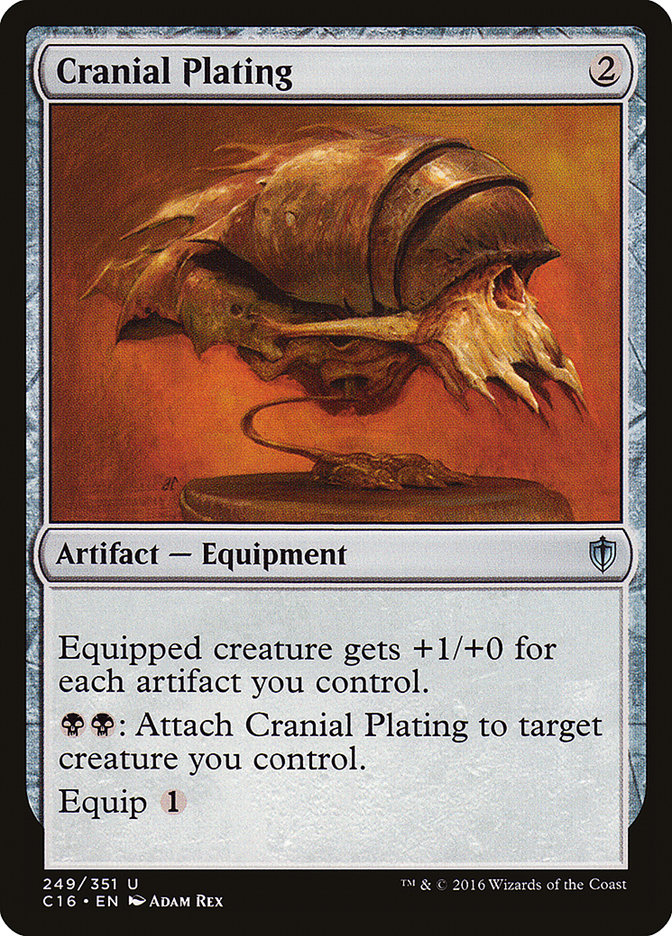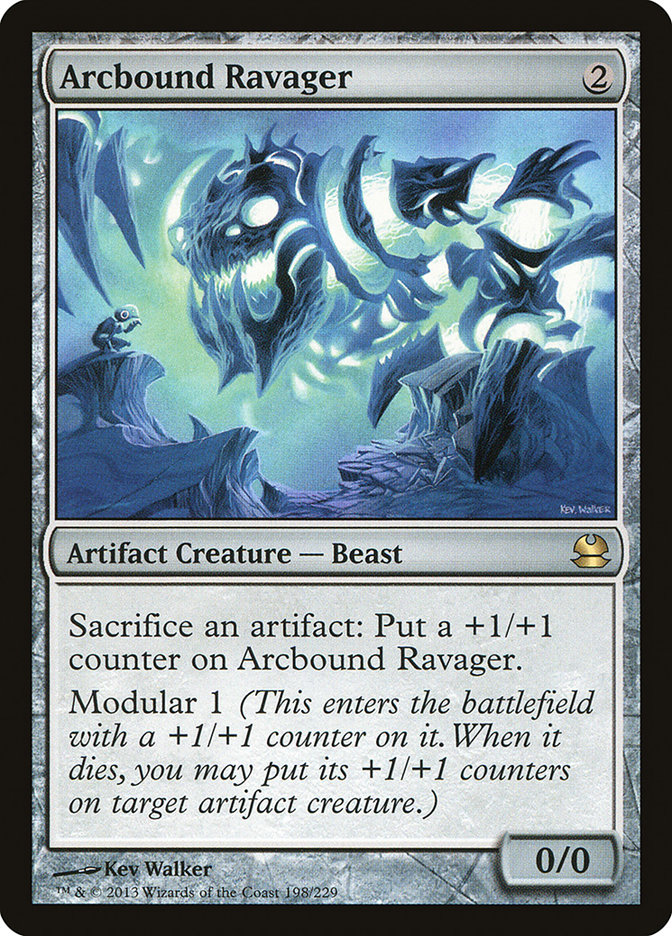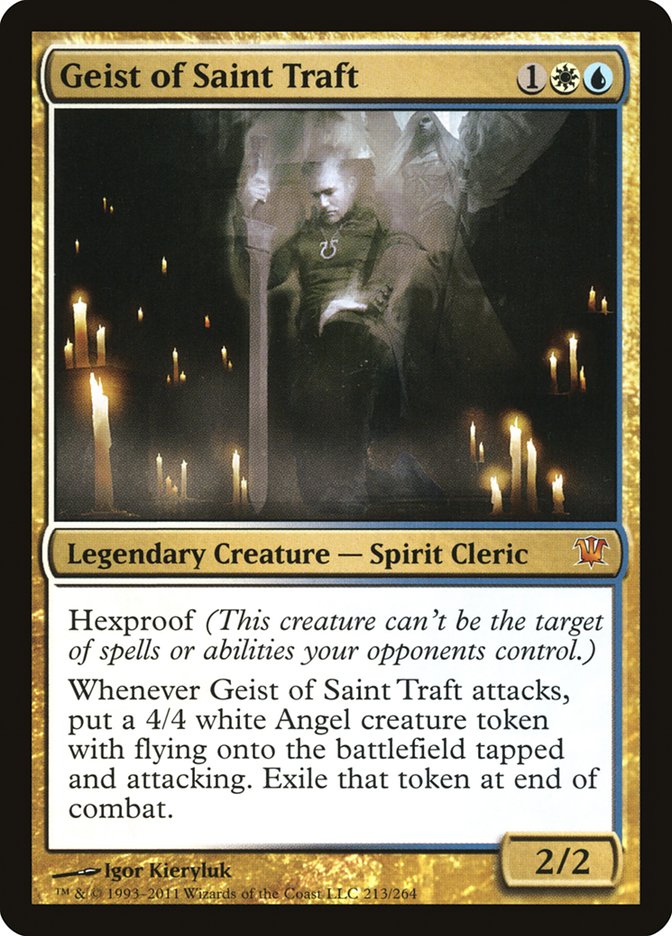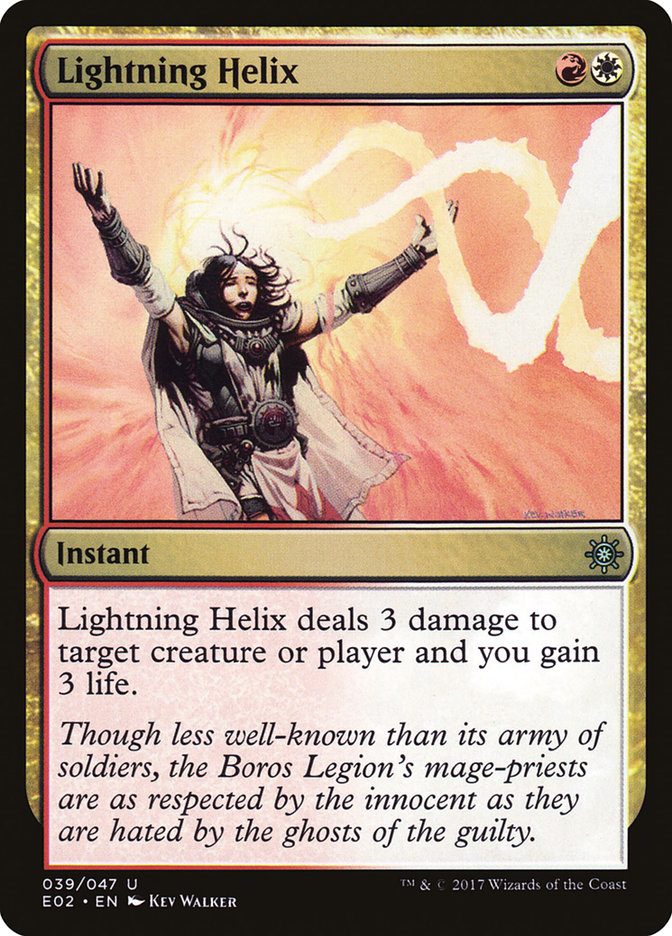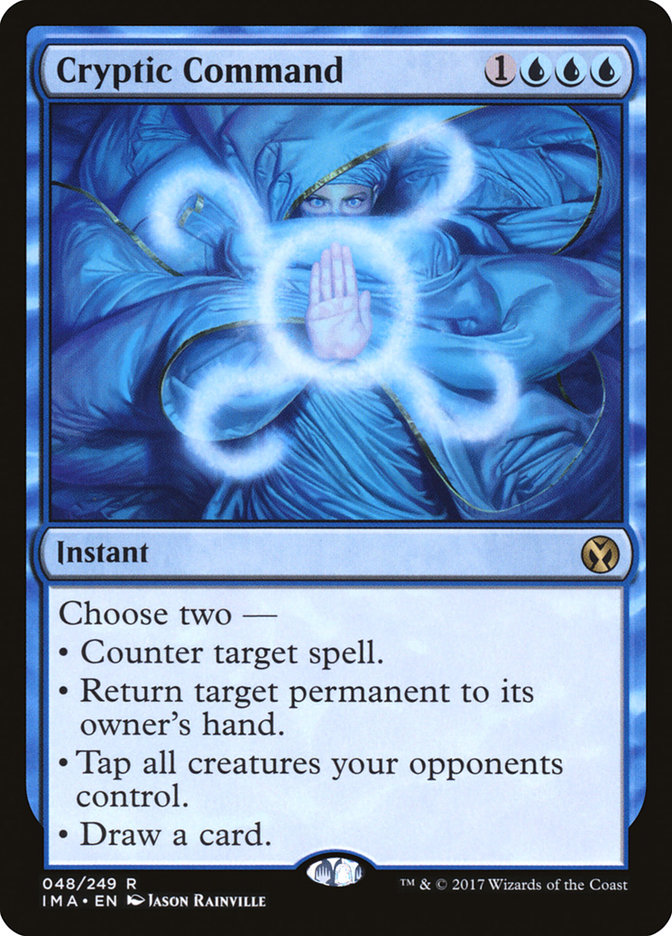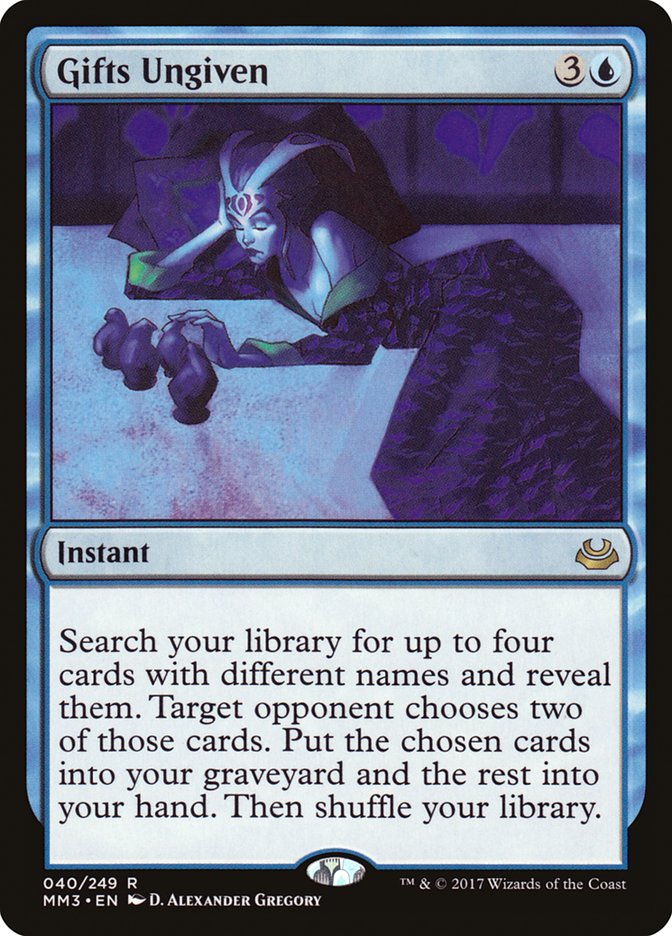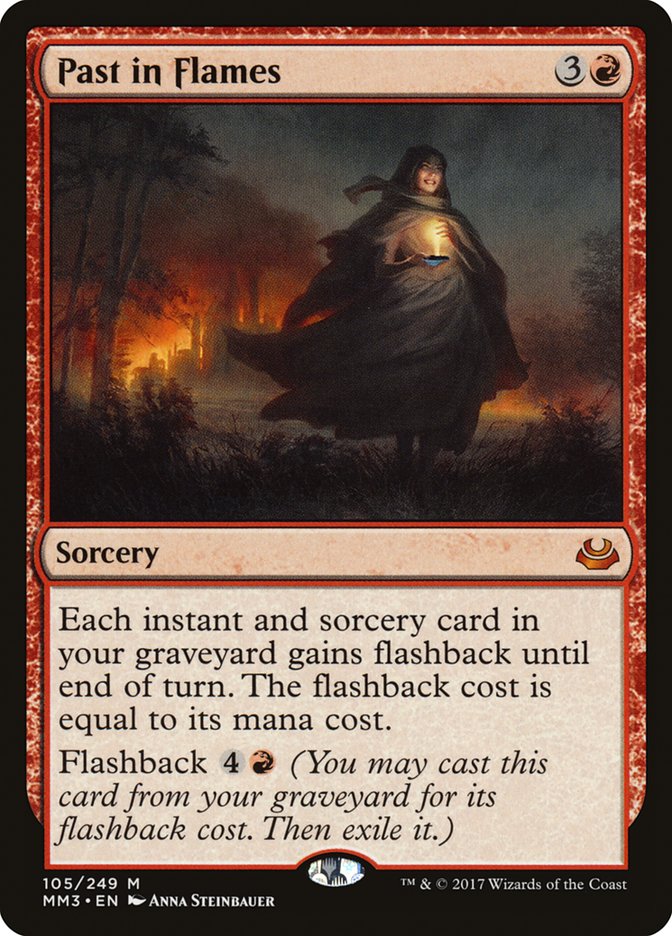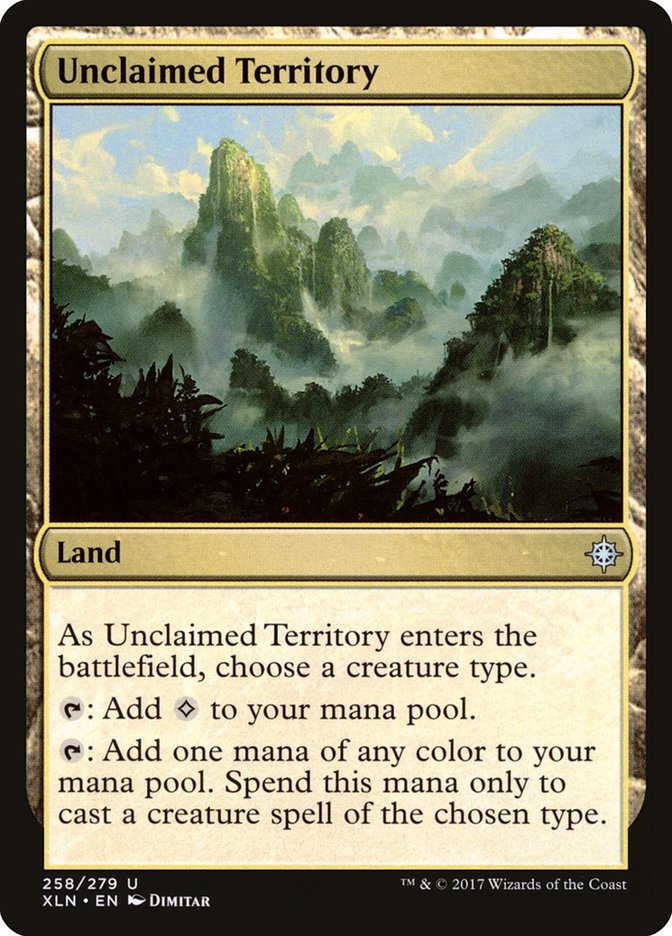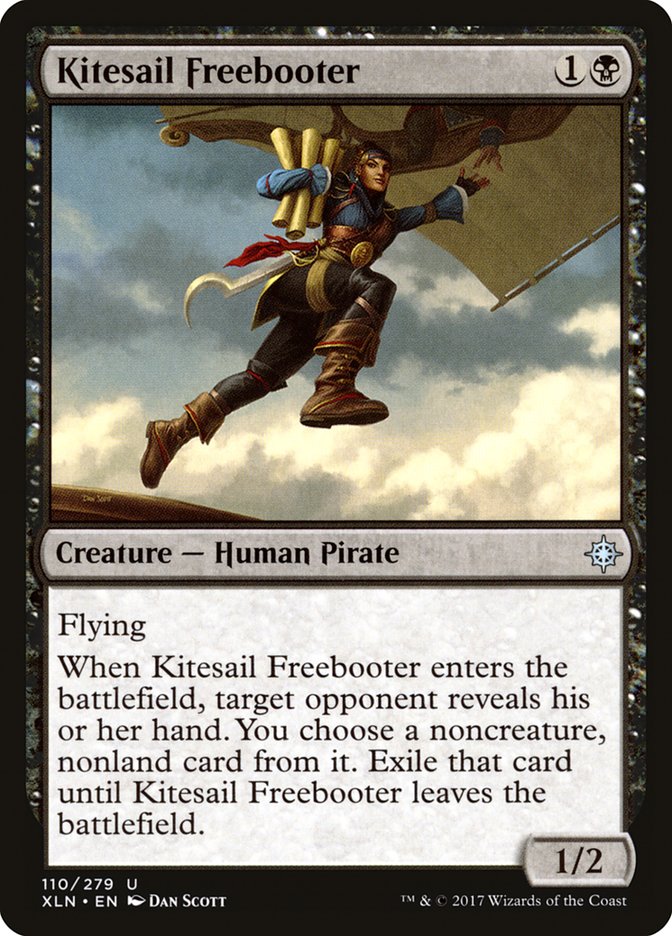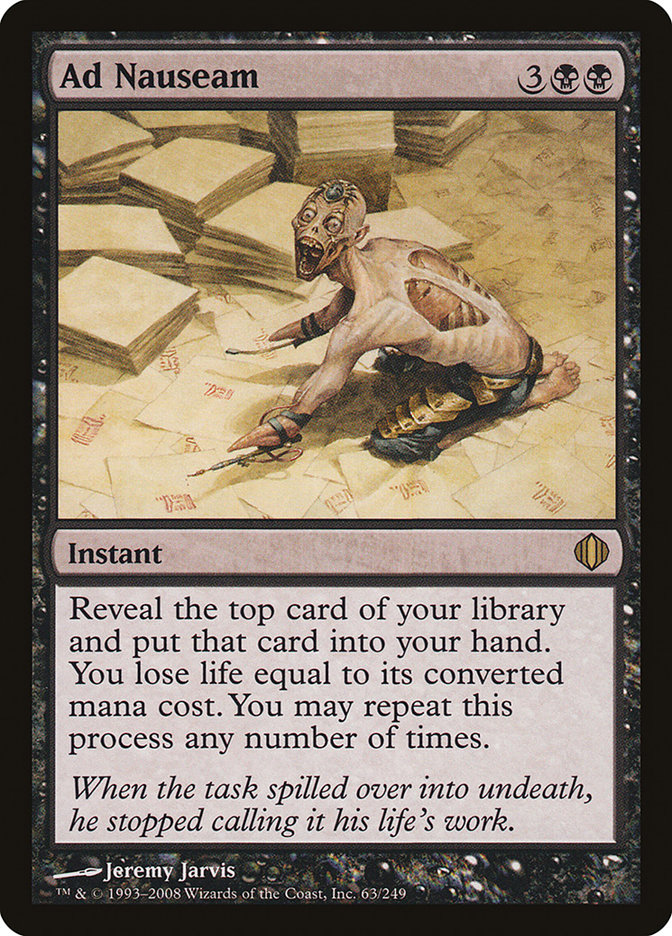Modern has been a hot topic recently, and it seems like everyone has been scrambling to understand how the Modern metagame functions.
Everyone wants to know what the next best deck will be, and how to predict that in order to get positioned well in the format. People seem to be catching on to the fact that the Modern metagame changes relatively quickly, and the best deck doesn’t maintain that status for too long before the metagame shifts to combat it.
So what can we do in order better understand the ways in which Modern has been changing over the past couple of months? I think the best way to predict Modern’s future is to take a close look at Modern’s recent past to identify any patterns that may reveal themselves.
2017 has been a rollercoaster ride for Modern, so I wanted to start at the beginning of 2017 and study what exactly was going on at each point in Modern, leading up to where we are today. Before we get into it, let’s start with an idea of where Modern was leading into 2017. We had three main pillars of the format: Infect, Bant Eldrazi, and Dredge.
Creatures (12)
Lands (20)
Spells (28)

Infect was a dominant deck of the format, with Gitaxian Probe really pushing it over the edge. The ability to see whether or not the coast was clear and what you needed to play around led to a lot of free wins with the insanely fast combination of small infect creatures and highly efficient pump spells.
Creatures (28)
- 4 Golgari Grave-Troll
- 4 Stinkweed Imp
- 4 Simian Spirit Guide
- 4 Narcomoeba
- 4 Bloodghast
- 4 Prized Amalgam
- 4 Insolent Neonate
Lands (19)
Spells (13)

Cathartic Reunion had just been printed in Kaladesh, which gave Dredge an extraordinary and explosive start that it had never had before in Modern. The unbanning of Golgari Grave-Troll, combined with the printing of Prized Amalgam and Cathartic Reunion, created a force to be reckoned with, and it quickly took over Modern as a new Tier 1 archetype.
Creatures (27)
- 4 Noble Hierarch
- 2 Spellskite
- 3 Drowner of Hope
- 2 Eldrazi Skyspawner
- 4 Eldrazi Displacer
- 4 Reality Smasher
- 4 Thought-Knot Seer
- 4 Matter Reshaper
Planeswalkers (1)
Lands (23)
Spells (9)

After Eye of Ugin was banned in Modern, the powerful Eldrazi creatures given to us by Oath of the Gatewatch found a home in Bant Eldrazi. Between Noble Hierarch and Eldrazi Temple, the deck was able to maintain some of the speed that it had with Eye of Ugin to power out these powerful Eldrazi creatures, and the deck continued to have success through the end of 2016.
January 9th, 2017 – Banned and Restricted Updates
The year started off with a bang: the banning of Golgari Grave-Troll and Gitaxian Probe.
This had a huge impact on Modern because it effectively crippled the top two decks of the format. People immediately recognized that we were back in the wild west of Modern, and no one really had a good idea of where the Modern metagame was going to go from there.
January 20th, 2017 – Aether Revolt
Modern was quickly pushed in a solid direction with the printing of Aether Revolt, which had an immediate and lasting impact on the format. Modern was introduced to three new cards that would be key role-players moving forward. The first to make an impact was Fatal Push.
Fatal Push was the perfect removal spell for Modern. Mana efficiency has always been very important in Modern, and because of that, pretty much all of the threats in Modern had a mana cost of three or less. So the printing of a single-mana removal spell that could target most of the threats expected in Modern had huge implications for the format.
February 20th, 2017 – Grand Prix Vancouver
Josh Utter-Leyton, Gerry Thompson, and Sam Black were the first to discover the next pillar of Modern. Various Death’s Shadow decks had existed before then, but they were all closer to Zoo-style decks that were playing a lot of small efficient creatures to try to end the game quickly. This was the first time we saw Death’s Shadow in more of a midrange build, designed to disrupt the opponent with discard and cheap removal before ending the game quickly with very large creatures.
Creatures (13)
Planeswalkers (2)
Lands (18)
Spells (27)

The deck was a huge success, and Josh Utter-Leyton, Gerry Thompson, and Sam Black completely dominated Grand Prix Vancouver with it. They came in first, third, and fourth, all with close to the same 75 cards. The deck immediately proved itself as a staple of Modern.
March 13th, 2017 – SCG Dallas Modern Open
Creatures (13)
Planeswalkers (3)
Lands (18)
Spells (26)

Jund Death’s Shadow continued to be dominant over the field for a few months, putting up excellent results in the SCG Dallas Modern Open in March. At this point everyone had figured out that Death’s Shadow was the real deal, and it felt like it really took over Modern during this time. Decks at the time couldn’t keep up with the brutal efficiency of Death’s Shadow.
Soon people started exploring other ways of using Death’s Shadow. The next iteration of Death’s Shadow that popped up was Grixis Death’s Shadow. This version was still able to have the excellent mana efficiency and low curve as the Jund version, but it also had the ability to out-value the Jund version with Snapcaster Mage and Kolaghan’s Command.
Creatures (16)
Lands (19)
Spells (25)

May 28th, 2017 – SCG Baltimore Modern Open
Creatures (16)
Lands (19)
Spells (25)

As soon as everyone realized that Grixis Death’s Shadow was the way to go, it didn’t take long for everyone to jump ship and start piloting the Grixis version instead of the Jund version. By the time the Modern Open in Baltimore rolled around, Grixis Death’s Shadow was everywhere.
At the same time, Todd Stevens was working on his own brew. He had been working on another Eldrazi deck that also incorporated the Tron lands for the ability to quickly go over the top of many other decks in Modern. It wasn’t until he introduced Walking Ballista to the equation that the deck really took shape.
June 11th, 2017 – SCG Charlotte Modern Open
Creatures (18)
Planeswalkers (2)
Lands (24)
Spells (16)

With Grixis Death’s Shadow having a large target on its head as the deck to beat, it was the perfect time for Eldrazi Tron to sweep in and take over the format. Todd Stevens had been having success with Eldrazi Tron in the months leading up to June, but it wasn’t until the SCG Charlotte Modern Open that he was able to demonstrate the power of Eldrazi Tron by taking down the Open.
At this point in Modern, the two clear pillars of the format were Eldrazi Tron and Grixis Death’s Shadow.
June 18th, 2017 – Grand Prix Las Vegas
Creatures (26)
- 4 Arcbound Ravager
- 4 Ornithopter
- 2 Master of Etherium
- 4 Steel Overseer
- 2 Memnite
- 2 Etched Champion
- 4 Signal Pest
- 4 Vault Skirge
Lands (17)
Spells (17)

With everyone’s eyes on Grixis Death’s Shadow and Eldrazi Tron, the next deck to have breakout success was Affinity at Grand Prix Las Vegas. Not only did Affinity have an excellent matchup against Eldrazi Tron, but the Grixis Death’s Shadow matchup was slightly favorable as well. The rest of the format was warped a bit too hard against Eldrazi Tron and Grixis Death’s Shadow, and not enough people had prepared for a resurgence of Affinity.
August 6th, 2017 – SCG Syracuse Modern Open
Creatures (20)
- 1 Wurmcoil Engine
- 1 Ulamog, the Ceaseless Hunger
- 2 Endbringer
- 4 Reality Smasher
- 4 Thought-Knot Seer
- 4 Matter Reshaper
- 4 Walking Ballista
Planeswalkers (2)
Lands (24)
Spells (14)

Creatures (19)
- 1 Ulamog, the Ceaseless Hunger
- 2 Endbringer
- 4 Reality Smasher
- 4 Thought-Knot Seer
- 4 Matter Reshaper
- 4 Walking Ballista
Planeswalkers (1)
Lands (24)
Spells (16)

Eldrazi Tron, Grixis Death’s Shadow, and Affinity continued to dominate through August, with Eldrazi Tron proving itself to be the top performing deck. In the SCG Syracuse Modern Open, Eldrazi Tron performed very well, putting two copies into the finals of the tournament.
During this tournament, Jonathan Rosum piloted his new take on Jesaki Control to a Top 8 finish, bringing a more tempo-oriented build with Geist of Saint Traft as a powerful finisher. The deck had a lot of good matchups in the field but suffered a bit against Eldrazi Tron.
Creatures (11)
Lands (24)
Spells (25)

During this tournament, another deck started gaining more traction and increased in popularity. That deck was U/R Gifts Storm.
Creatures (7)
Lands (18)
Spells (35)
- 4 Sleight of Hand
- 4 Serum Visions
- 3 Peer Through Depths
- 4 Gifts Ungiven
- 4 Desperate Ritual
- 3 Grapeshot
- 4 Manamorphose
- 4 Pyretic Ritual
- 2 Past in Flames
- 3 Thought Scour
Sideboard

Storm had received a pretty big hit in the loss of Gitaxian Probe earlier in the year, but the printing of Baral, Chief of Compliance gave the archetype new hope. With the printing of another two-mana creature that would discount your spells by one mana apiece, the combination of Gifts Ungiven and Past in Flames was a much more consistent shell for Storm.
August 13th, 2017 – SCG Richmond Modern Open
Creatures (7)
Lands (18)
Spells (35)
- 4 Sleight of Hand
- 4 Serum Visions
- 1 Peer Through Depths
- 4 Gifts Ungiven
- 4 Desperate Ritual
- 4 Remand
- 3 Grapeshot
- 4 Manamorphose
- 4 Pyretic Ritual
- 1 Apostle's Blessing
- 2 Past in Flames
Sideboard

Around this time Storm pilots started to figure out a way to defeat Grixis Death’s Shadow, a matchup that had given them trouble in the past. As a result, Gifts Storm started to put up more and more results, eventually taking down the SCG Richmond Modern Open in the hands of Kazu Negri.
Jonathan Rosum once again makes the Top 8 of this tournament with his Jeskai deck, bringing further attention to the archetype. Players begin to realize that control decks in this format need to be able to end the game quickly, and Geist of Saint Traft does exactly that.
October 14th, 2017 – SCG Charlotte Modern Open
Creatures (6)
Lands (17)
Spells (37)
- 4 Sleight of Hand
- 4 Serum Visions
- 4 Gifts Ungiven
- 4 Desperate Ritual
- 4 Opt
- 3 Remand
- 3 Grapeshot
- 4 Manamorphose
- 4 Pyretic Ritual
- 1 Noxious Revival
- 2 Past in Flames
Sideboard

Storm once again has a dominant performance in the SCG Charlotte Modern Open, solidifying its spot at the top of Modern. Eldrazi Tron and Grixis Death’s Shadow were still big parts of the metagame, but the top spot had definitely shifted to Gifts Storm.
October 22nd, 2017 – SCG Cincinnati Modern Open
Ixalan had just been released, and the printing of Unclaimed Territory and Kitesail Freebooter lead people to try out Humans again in Modern. I was lucky enough to run through SCG Cincinnati undefeated with an Aether Vial version of the Humans deck.
Creatures (36)
- 4 Meddling Mage
- 4 Noble Hierarch
- 4 Champion of the Parish
- 3 Mayor of Avabruck
- 4 Thalia, Guardian of Thraben
- 4 Mantis Rider
- 3 Reflector Mage
- 4 Thalia's Lieutenant
- 2 Thalia, Heretic Cathar
- 4 Kitesail Freebooter
Lands (20)
Spells (4)

Not only did the deck get a huge power boost from Unclaimed Territory making the mana excellent and Kitesail Freebooter giving the deck more disruption, but it was in prime position to prey on the U/R Gifts Storm deck that had been dominating in Modern at the time. The Humans deck received a lot of hype after this weekend because it was a brand new archetype.
Many people started playing Humans after this weekend, and as a result the Jeskai deck popularized by Jonathan Rosum also started seeing a huge increase in numbers. There weren’t many large events at this time, but Jeskai quickly took over the number one spot in Modern in the metagame percentages.
December 10th, 2017 – Grand Prix Oklahoma City
By the time Grand Prix Oklahoma City rolled around, everyone had caught on to the fact that Modern was full of midrange and control decks that were out to prey on the recent Humans archetype. As a reaction to this, savvy players started to pick up big mana decks that could prey on these midrange decks, such as Green Tron and TitanShift.
Creatures (8)
Lands (27)
Spells (25)

Creatures (6)
Planeswalkers (6)
Lands (19)
Spells (29)
- 4 Oblivion Stone
- 4 Sylvan Scrying
- 4 Chromatic Sphere
- 4 Chromatic Star
- 3 Relic of Progenitus
- 4 Expedition Map
- 4 Ancient Stirrings
- 2 Fatal Push
Sideboard

Sure enough, the Top 8 of Grand Prix Oklahoma City was littered with these big mana decks, and it was clear that the metagame had shifted heavily in their favor.
And now we’re all caught up. So what can we learn from looking at all of this data?
Common Trends
We can see that change in the Modern metagame happen because of one of three main reasons.
1. Cards are banned or unbanned. We saw this happen at the beginning of 2017 with the banning of Gitaxian Probe and Golgari Grave-Troll. It’s not terribly surprising that this created a huge impact on the Modern metagame, because it effectively got rid of the two most popular decks at the time.
2. New cards are printed that impact the format. We saw pretty clear examples of this a couple of times this year. The first was in Aether Revolt, where we were given Fatal Push; Baral, Chief of Compliance; and Walking Ballista.
Fatal Push effectively turned the Death’s Shadow decks into what they are today, giving them an excellent removal spell in black. Baral put Gifts Storm back on the map in a big way, while Walking Ballista gave Eldrazi Tron another flexible threat that turned it into a Tier 1 archetype.
The second set that had a large impact was Ixalan, with the printing of Unclaimed Territory and Kitesail Freebooter. This essentially created the Humans archetype as it exists today. Humans turned out to be well-positioned in the metagame where it was introduced, and as a result had a large impact on what was played.
3. The metagame adapts to beat the most popular decks. One thing that has remained true in Modern all year is that the format was always adapting to what the current top contenders were. Nothing stayed on top of Modern for longer than a couple of months before being dethroned, either by a new deck popping up or the increased popularity of decks that preyed on these popular decks.
Where Do We Go From Here?
In the most recent major Modern event, big mana decks like Green Tron and TitanShift were the most dominant. I expect these decks to do well for a bit, but it won’t be long before linear combo decks that are well-suited to combat these big mana decks take over. Decks like U/R Gifts Storm and Ad Nauseam are in an excellent position to combat these archetypes.
Clearly Modern is getting faster and faster at adapting to new popular decks. Humans only became a popular deck at the end of October, yet it only took until early December for Jeskai and other midrange decks to rise to the top and fall again to big mana decks.
It will be interesting to see if Modern continues to speed up its reaction time or if it will eventually settle into something more consistent. It’s becoming easier and easier to digest all of the information that Modern has to offer and try to get an edge that way.



